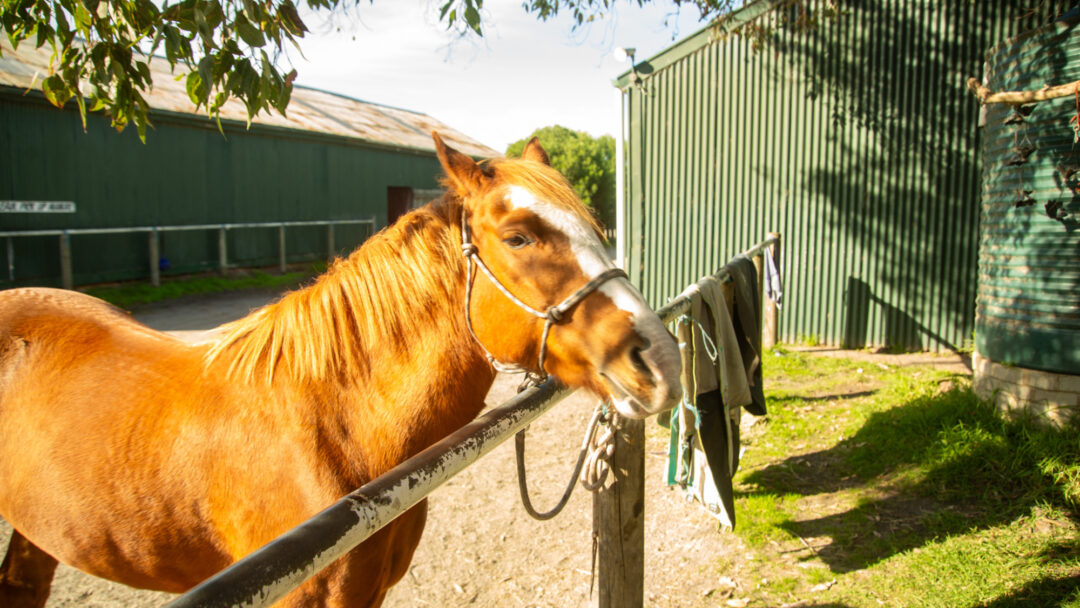Article
Stella Barton began riding at the age of seven.
She would eventually go on to compete in the Paris 2024 Paralympics, against the stunning backdrop of Versailles.
The Grade I para-equestrian made it through the individual and team tests at last year’s Paris Paralympics to represent Australia in the freestyle.
Scoring a 70.833 per cent to finish eighth in the Individual Grade I Event on stallion Lord Larmarque (affectionately known as Bug), Stella was overjoyed at being given the ride by three-time Paralympian Sharon Jarvis.
It would be great if more attention could be given to the achievements of disabled people more frequently than every 4 years
Stella Barton
Stella, who has cerebral palsy and competes in walk-only tests where accuracy and consistency are crucial, said that although there have been improvements in media representation of the Paralympics, challenges remain.
“There’s more that commentators could know about the Grade I test to help audiences better understand the nuances of what we are achieving in the walk test”.
“A lot of them don’t understand Grade I and think it’s just walking, but there’s so much more to it than that”.
Grade I tests are walk-only tests, and in Freestyle Tests riders may show lateral work and, in some cases, trot. Three loop serpentines are also required, as well as other movements that must be included.
However, media coverage of para-equestrian often fails to acknowledge the nuances that go into such complex movements, where the horse and rider must work as one.
Stella said that major improvements had been made over the years, with media slowly beginning to pay attention to what athletes were doing.
Nevertheless, she also reflected that although media coverage was “quite positive,” outside the four-year Paralympic cycle:
disabled people are not seen enough in the media as a regular part of life
Stella Barton
“If we are, it can be quite negative and pitiful,” Stella pointed out.
Acknowledging that improved coverage during the games meant that the public were able to see that disabled people are “strong and capable,” Stella said she was thrilled at having her skills showcased.
“It was great that there was interest in what I was doing,” Stella affirmed.
Acknowledging the power of television to engage audiences, Stella said she had wanted to give audiences something to cheer for while in the arena.
People with disabilities are often subject to disabling imagery that does little to showcase the full experience of having an impairment.
Stella pointed out that the addition of a horse to the Paralympic media narrative adds to the excitement of the event.
We’re working with live animals, asking a huge horse to go where we want them to go, and that’s quite a different image from what audiences might expect to see
Stella Barton
“I’m really only as good as the horse I’m riding because the events are judged on the horse’s movement and how I get the horse to produce that movement.”
Stella’s Mum, Film Director and owner of video-on-demand website Disability Busters, Sarah Barton, said that while cheering on Stella at the Paralympics, she was very conscious that the cameras were on her and Equine Pathways coach Julia Battams.
“Emotion makes good television,” Sarah pointed out. “Julia Battams was in tears, but somehow I managed to keep it together”.
The skill and perseverance exhibited by Stella throughout her Paralympic campaign were showcased at the final Freestyle event, with Stella and horse Lord Lamarque scoring an impressive 73.960%, ranking 7th overall.
Stella said her goal throughout the campaign was to showcase the strength and fortitude taken to work so closely with such majestic and powerful animals, and to make it into the Freestyle event.
After finishing her test, Stella held her head and hands high, celebrating her achievement with her team by her side.
“The visual imagery they used repetitively was looking for celebration and performance.
“I gave them that.”
